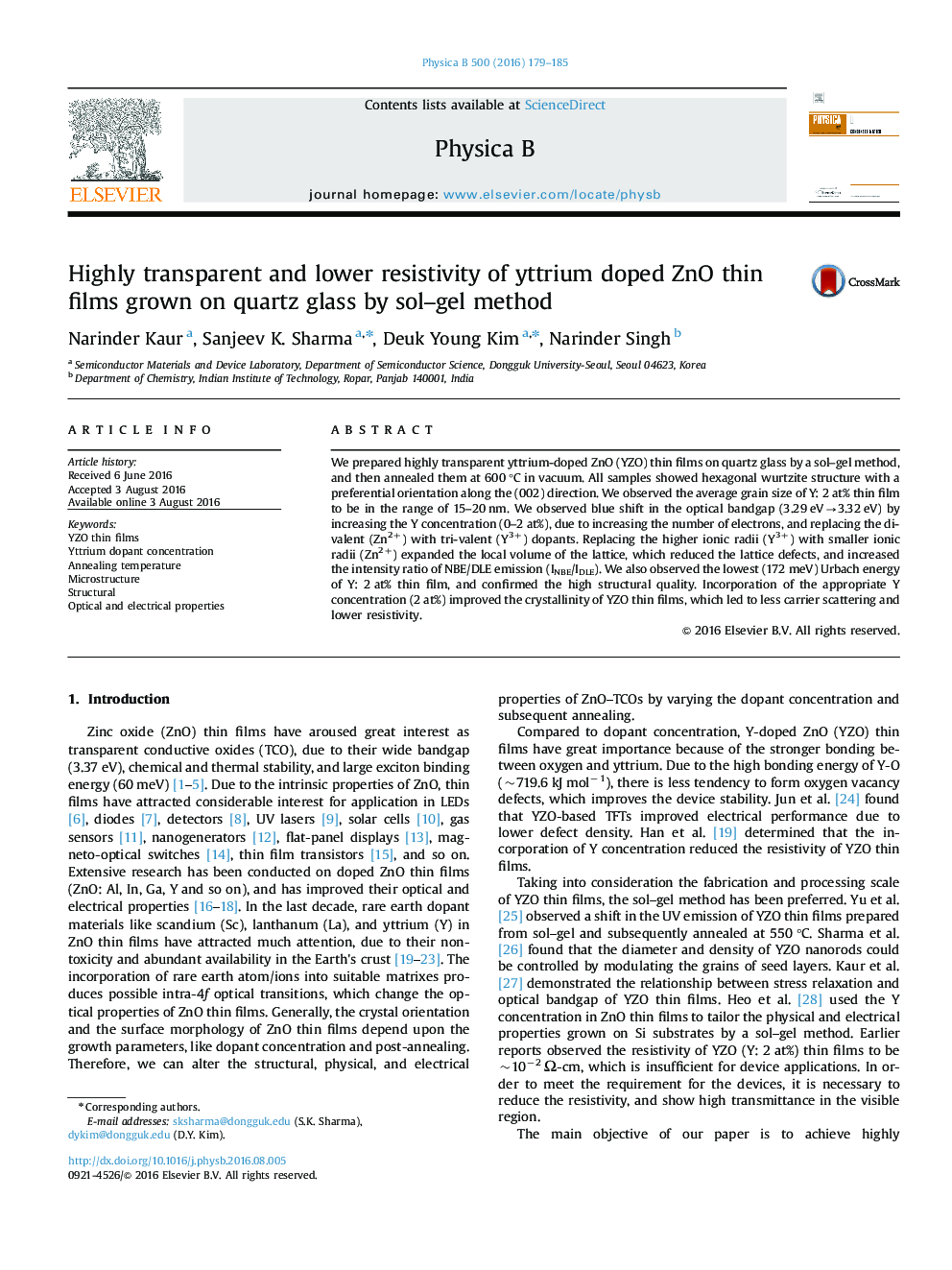| Article ID | Journal | Published Year | Pages | File Type |
|---|---|---|---|---|
| 1808229 | Physica B: Condensed Matter | 2016 | 7 Pages |
•Highly transparent YZO thin films grown on quartz glass by a sol–gel method.•Bandgap was dependent on the replacement of di-valent (Zn2+) with tri-valence ions (Y3+).•The lowest value of Urbach energy of YZO (Y: 2 at%) thin film confirmed the high structural quality.•Enhancement of UV emission in PL demonstrated the reduction of deep level defects.•Improved crystallinity of Y: 2 at% thin film leads to the less carrier scattering and low resistivity.
We prepared highly transparent yttrium-doped ZnO (YZO) thin films on quartz glass by a sol–gel method, and then annealed them at 600 °C in vacuum. All samples showed hexagonal wurtzite structure with a preferential orientation along the (002) direction. We observed the average grain size of Y: 2 at% thin film to be in the range of 15–20 nm. We observed blue shift in the optical bandgap (3.29 eV→3.32 eV) by increasing the Y concentration (0–2 at%), due to increasing the number of electrons, and replacing the di-valent (Zn2+) with tri-valent (Y3+) dopants. Replacing the higher ionic radii (Y3+) with smaller ionic radii (Zn2+) expanded the local volume of the lattice, which reduced the lattice defects, and increased the intensity ratio of NBE/DLE emission (INBE/IDLE). We also observed the lowest (172 meV) Urbach energy of Y: 2 at% thin film, and confirmed the high structural quality. Incorporation of the appropriate Y concentration (2 at%) improved the crystallinity of YZO thin films, which led to less carrier scattering and lower resistivity.
